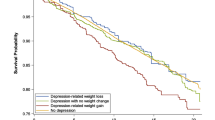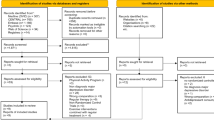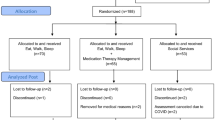Abstract
Objective:
Depression is associated with increased risk for obesity and worse weight loss treatment outcomes. The purpose of the present study was to test the hypothesis that delivering evidence-based behavior therapy for depression before a lifestyle weight loss intervention improves both weight loss and depression.
Design:
In a randomized controlled trial, obese women with major depressive disorder (N=161, mean age=45.9 (s.d.: 10.8) years) were randomized to brief behavior therapy for depression treatment followed by a lifestyle intervention (BA) or a lifestyle intervention only (LI). Follow-up occurred at 6 and 12 months. Main outcome measures included weight loss and depression symptoms.
Results:
Intention-to-treat analyses revealed both conditions lost significant weight, but no differences between conditions in weight change at 6 months (BA=−3.0%, s.e.=−0.65%; LI=−3.7%, s.e.=0.63%; P=0.48) or 12 months (BA=−2.6%, s.e.=0.77%; LI=−3.1%, s.e.=0.74%; P=0.72). However, the BA condition evidenced significantly greater improvement in Beck Depression Inventory-II scores relative to the LI condition at both 6 months (BA mean change=−12.5, s.d.=0.85; LI mean change=−9.2, s.d.=0.80, P=0.005) and 12 months (BA mean change=−12.6, s.d.=0.97; LI mean change=−9.9, s.d.=0.93; P=0.045). Participants who experienced depression remission by 6 months (61.2%) lost greater weight (mean=−4.31%; s.e.=0.052) than those who did not (39.7%; mean=−2.47%, s.e.=0.53; P=.001).
Conclusion:
Adding behavior therapy to a lifestyle intervention results in greater depression remission but does not improve weight loss within 1 year. Improvement in depression is associated with greater weight loss.
This is a preview of subscription content, access via your institution
Access options
Subscribe to this journal
Receive 12 print issues and online access
$259.00 per year
only $21.58 per issue
Buy this article
- Purchase on Springer Link
- Instant access to full article PDF
Prices may be subject to local taxes which are calculated during checkout


Similar content being viewed by others
References
Pagoto SL, Schneider KL, Appelhans B, Curtin C, Hajduk A . Psychological co-morbidities of obesity. In: Pagoto SL (ed.). Psychological Co-Morbidities of Physical Illness: A Behavioral Medicine Perspective 1st ed Springer: New York, NY, USA, 2011.
Pagoto SL, Bodenlos JS, Kantor L, Gitkind M, Curtin C, Ma Y . Association of major depression and binge eating disorder with weight loss in a clinical setting. Obesity 2007; 15: 2557–2559.
Clark MM, Niaura R, King TK, Pera V . Depression, smoking, activity level, and health status: pretreatment predictors of attrition in obesity treatment. Addict Behav 1996; 21: 509–513.
Pekarik G, Blodgett C, Evans RG, Wierzbicki M . Variables related to continuance in a behavioral weight loss program. Addict Behav 1984; 9: 413–416.
Linde JA, Simon GE, Ludman EJ, Ichikawa LE, Operskalski BH, Arterburn D et al. A randomized controlled trial of behavioral weight loss treatment versus combined weight loss/depression treatment among women with comorbid obesity and depression. Ann Behav Med 2011; 41: 119–130.
Pagoto SL, Kantor L, Bodenlos JS, Gitkind M, Ma Y . Translating the Diabetes Prevention Program into a hospital-based weight loss program. Health Psychol 2008; 27: S91–S98.
U.S. Preventive Services Task Force. Screening and Interventions for Overweight and Obesity in Adults. Agency for Healthcare Research and Quality: Rockville, MD, USA, 2003. (Report No.: 00-4084).
Faulconbridge L, Wadden T, Berkowitz RI, Pulcini M, Treadwell T . Treatment of comorbid obesity and major depressive disorder: a prospective pilot study for their combined treatment. J Obes 2011; 2011: 870385.
Pagoto SL, Bodenlos JS, Schneider KL, Olendzki B, Spates RC, Ma Y . Initial investigation of behavioral activation therapy for co-morbid major depressive disorder and obesity. Psychotherapy 2008; 45: 410–415.
Hopko DR, Lejuez CW, Ruggiero KJ, Eifert GH . Contemporary behavioral activation treatments for depression: procedures, principles, and progress. Clin Psychol Rev 2003; 23: 699–717.
Lejuez CW, Hopko DR, Hopko SD . A brief behavioral activation treatment for depression. Treatment manual. Behav Modif 2001; 25: 255–286.
Cullen JM, Spates RC, Pagoto SL, Doran N . Behavioral activation treatment for major depressive disorder: A pilot investigation. Behav Anal Today 2006; 7: 151–166.
Porter JF, Spates RC, Smitham S . Behavioral activation group therapy in public mental health settings: a pilot investigation. Prof Psychol Res Pract 2004; 35: 297–301.
Dimidjian S, Hollon SD, Dobson KS, Schmaling KB, Kohlenberg RJ, Addis ME et al. Randomized trial of behavioral activation, cognitive therapy, and antidepressant medication in the acute treatment of adults with major depression. J Consult Clin Psychol 2006; 74: 658–670.
Jacobson NS, Dobson KS, Truax PA, Addis ME, Koerner K, Gollan JK et al. A component analysis of cognitive-behavioral treatment for depression. J Consult Clin Psychol 1996; 64: 295–304.
Schneider KL, Bodenlos JS, Ma Y, Olendzki B, Oleski J, Merriam P et al. Design and methods for a randomized clinical trial treating co-morbid obesity and major depressive disorder. BMC Psychiatry 2008; 8: 77.
Spitzer RL, Williams JB, Gibbon M, First MB . The structured clinical interview for DSM-III-R (SCID). I: history, rationale, and description. Arch Gen Psychiatry 1992; 49: 624–629.
Beck AT, Epstein N, Brown G, Steer RA . An inventory for measuring clinical anxiety: Psychometric properties. J Consult Clin Psychol 1988; 56: 893–897.
Hamilton M . A rating scale for depression. J Neurol Neurosurg Psychiatry 1960; 23: 56–62.
Ryan P . sxd1.1: Update to random allocation of treatment to blocks. Stata Technical Bulletin 1999; 9: 36–37.
Beck AT, Steer RA, Brown GK . Manual for the Beck Depression Inventory-II. The Psychological Corporation: San Antonio, TX, USA, 1996.
Williams J . A structured interview guide for the Hamilton Depression Rating Scale. Arch Gen Psychiatry 1988; 45: 742–747.
Nelson M, Black AE, Morris JA, Cole TJ . Between- and within-subject variation in nutrient intake from infancy to old age: estimating the number of days required to rank dietary intakes with desired precision. Am J Clin Nutr 1989; 50: 155–167.
Liu K, Stamler J, Dyer A, McKeever J, McKeever P . Statistical methods to assess and minimize the role of intra-individual variability in obscuring the relationship between dietary lipids and serum cholesterol. J Chronic Dis 1978; 31: 399–418.
el Lozy M . Dietary variability and its impact on nutritional epidemiology. J Chronic Dis 1983; 36: 237–249.
Buzzard IM, Price KS, Warren RA . Considerations for selecting nutrient-calculation software: evaluation of the nutrient database. Am J Clin Nutr 1991; 54: 7–9.
Matthews CE, Freedson P, Hebert J, Stanek E, Ockene I, Merriam P . Comparison of physical activity assessment methods in the Seasonal Variation of Blood Cholesterol Levels Study. Med Sci Sports Exerc 2000; 32: 976–984.
Matthews CE, Hebert JR, Freedson PS, Stanek EJ, Merriam PA, Ebbeling CB et al. Sources of variance in daily physical activity levels in the seasonal variation of blood cholesterol study. Am J Epidemiol 2001; 153: 987–995.
Matthews CE, Freedson PS, Stanek EJ, Hebert JR, Merriam PA, Rosal MC et al. Seasonal variation of household, occupational, and leisure-time physical activity: Longitudinal analyses from the Seasonal Variation of Cholesterol Study. Am J Epidemiol 2001; 153 (2): 172–183.
Friedewald WT, Levy RI, Fredrickson DS . Estimation of the concentration of low-density lipoprotein cholesterol in plasma, without use of the preparative ultracentrifuge. Clin Chem 1972; 18: 499–502.
Myers GL, Kimberly MM, Waymack PP, Smith SJ, Cooper GR, Sampson EJ . A reference method laboratory network for cholesterol: a model for standardization and improvement of clinical laboratory measurements. Clin Chem 2000; 46: 1762–1772.
Myers GL, Cooper GR, Winn CL, Smith SJ . The Centers for Disease Control-National Heart, Lung and Blood Institute Lipid Standardization Program. An approach to accurate and precise lipid measurements. Clin Lab Med 1989; 9: 105–135.
Turner JA, Deyo RA, Loeser JD, Von Korff M, Fordyce WE . The importance of placebo effects in pain treatment and research. JAMA 1994; 271: 1609–1614.
DPP Research Group. The Diabetes Prevention Program (DPP): Description of lifestyle intervention. Diabetes Care 2002; 25: 2165–2171.
Haskell WL, Lee IM, Pate RR, Powell KE, Blair SN, Franklin BA et al. Physical activity and public health: updated recommendation for adults from the American College of Sports Medicine and the American Heart Association. Med Sci Sports Exerc 2007; 39: 1423–1434.
NICE. The treatment and management of depression in adults (Updated edition): The British Psychological Society and The Royal College of Psychiatrists 2010.
Martell CR, Addis ME, Jacobson NS eds Depression in context. Strategies for guided action. W. W. Norton: New York, NY, USA, 2001.
Lejuez CW, Hopko DR, Acierno R, Daughters SB, Pagoto SL . Ten year revision of the Brief Behavioral Activation Treatment for Depression (BATD): revised treatment manual (BATD-R). Behav Modif 2011; 35: 111–161.
Littell R, Milliken G, Stroup W, Wolfinger R . SAS System for Mixed Models. SAS Institute Inc: Cary, NC, USA, 1996.
Chuang-Stein C, Tong DM . The impact and implication of regression to the mean on design and analysis of medical investigations. Stat Methods Med Res 1997; 6: 115–128.
Molenberghs G, Verbeke G . Models for Discrete Longitudinal data. Springer Science: New York, NY, USA, 2005.
DPP Research Group. Achieving weight and activity goals among diabetes prevention program lifestyle participants. Obes Res 2004; 12: 1426–1434.
Shafer AB . Meta-analysis of factor structures of four depression questionnaires: Beck, CES-D, Hamilton, and Zung. J Clin Psychol 2006; 62: 124–146.
Moran PJ, Mohr DC . The validity of the Beck Depression Inventory and Hamilton Rating Scale for depression items in the assessment of depression among patients with multiple sclerosis. J Behav Med 2005; 28: 35–41.
Kessler RC, Adler L, Ames M, Demler O, Faraone S, Hiripi E et al. The World Health Organization Adult ADHD Self-Report Scale (ASRS): A short screening scale for use in the general population. Psychol Med 2005; 35: 245–256.
Acknowledgements
The project described was supported by grant 1R01MH078012 to Dr Pagoto from the National Institute of Mental Health. Partial salary support for Dr Waring is provided by National Heart Lung Blood Institute grant 1U01HL105268. All authors have full access to the data and take responsibility for the integrity of the data and the accuracy of the data analysis.
Author information
Authors and Affiliations
Corresponding author
Ethics declarations
Competing interests
The authors declare no conflict of interest.
Additional information
This manuscript was presented as a paper at the 2012 Society of Behavioral Medicine Annual Conference in New Orleans, LA. It received a Paper Citation Award from SBM.
Rights and permissions
About this article
Cite this article
Pagoto, S., Schneider, K., Whited, M. et al. Randomized controlled trial of behavioral treatment for comorbid obesity and depression in women: the Be Active Trial. Int J Obes 37, 1427–1434 (2013). https://doi.org/10.1038/ijo.2013.25
Received:
Revised:
Accepted:
Published:
Issue Date:
DOI: https://doi.org/10.1038/ijo.2013.25
Keywords
This article is cited by
-
Integrated smoking cessation and mood management following acute coronary syndrome: Protocol for the post-acute cardiac event smoking (PACES) trial
Addiction Science & Clinical Practice (2023)
-
Depressive Symptom Subgroups and Their Association with Prevalent and Incident Cardiovascular Risk Factors in the Coronary Artery Risk Development in Young Adults (CARDIA) Study
International Journal of Behavioral Medicine (2023)
-
Integrated Behavioral Interventions for Adults with Comorbid Obesity and Depression: a Systematic Review
Current Diabetes Reports (2022)
-
Depression and obesity among females, are sex specificities considered?
Archives of Women's Mental Health (2021)
-
Adherence to behavioral recommendations for weight loss and associated psychosocial factors among African American adults
Journal of Behavioral Medicine (2020)



